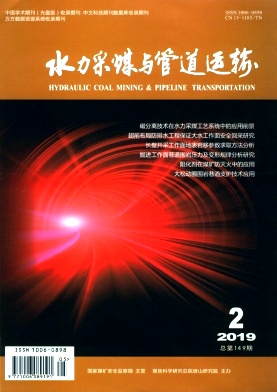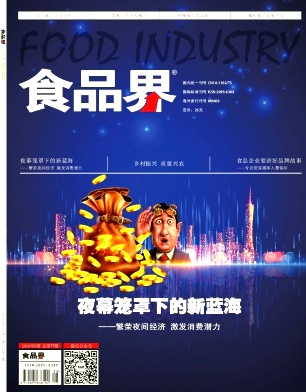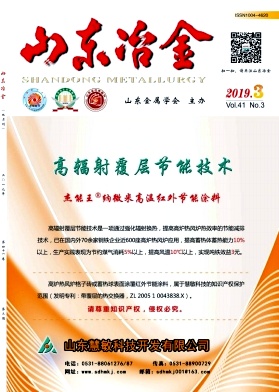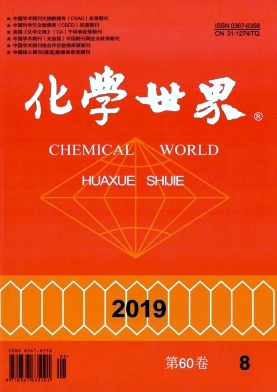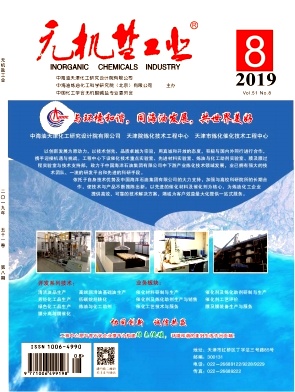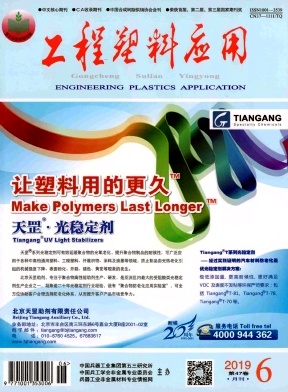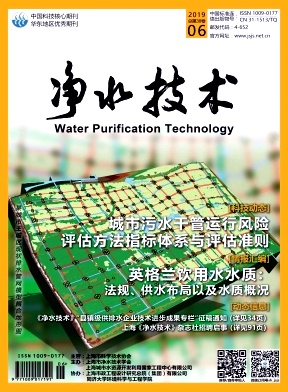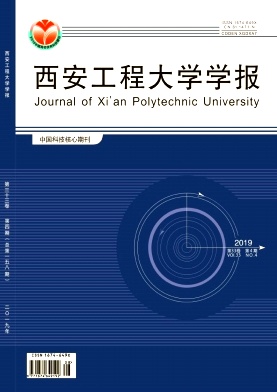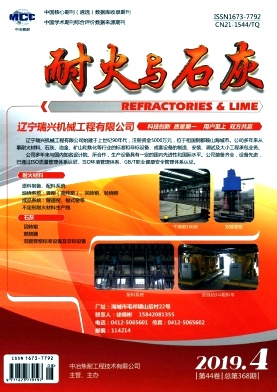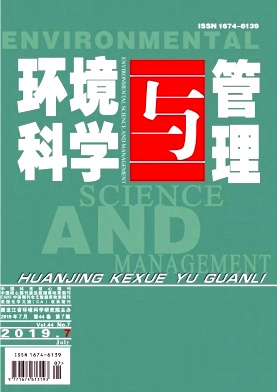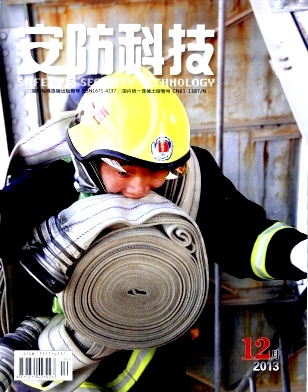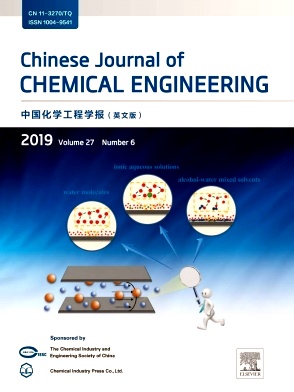
- 影响因子:
- 出版文献量:
- 总下载次数:
- 总被引次数:
Chinese Journal of Chemical Engineering
统计源期刊Chinese Journal of Chemical Engineering
Chinese Journal of Chemical Engineering杂志由中国科协主管、中国教育学会;中国化工学会; 主办的无机化工统计源期刊,月刊,该刊创办于1982年,审稿周期最快1-3个月。
- 主管单位:中国科协
- 学科:工程科技I
- 专业:无机化工
- 主办单位:中国化工学会;
- 出版周期:月刊
- 出版地区:北京
- 国际刊号ISSN:1004-9541
- 语言:英语
- 出版社:学会类
- 国内刊号CN:11-3270/TQ
- 创刊:1982
- 曾用名:Chinese Journal of Chemical Engineering
- 邮发代号:
- 邮编:100011
该刊被以下数据库收录:
期刊荣誉:
-
1
沟通需求
-
2
确认期刊
-
3
支付定金
-
4
完成服务
-
5
支付尾款
The Chinese Journal of Chemical Engineering (Bimonthly, started in 1982) is the official journal of the Chemical Industry and Engineering Society of China and published by the Chemical Industry Press. The aim of the journal is to develop the international exchange of scientific and technical information in the field of chemical engineering. It publishes original research papers that cover the major advancements and achievements in chemical engineering in China as well as some articles from overseas contributors. The topics of journal include chemical engineering, chemical technology, biochemical engineering, energy and environmental engineering and other relevant fields. Papers are published on the basis of their relevance to theoretical research, practical application or potential uses in the industry as Research Papers, Research Notes, Chemical Engineering Data and Reviews. Prominent domestic and overseas chemical experts and scholars have been invited to form an International Advisory Board and the Editorial Committee. It enjoys recognition among Chinese academia and industry as a reliable source of information of what is going on in chemical engineering research, both domestic and abroad.
Title. Concise and informative. Titles are often used in information-retrieval systems. Avoid abbreviations and formulae where possible.
• Author names and affiliations. Please clearly indicate the given name(s) and family name(s) of each author and check that all names are accurately spelled. Present the authors' affiliation addresses (where the actual work was done) below the names. Indicate all affiliations with a lower-case superscript letter immediately after the author's name and in front of the appropriate address. Provide the full postal address of each affiliation, including the country name and, if available, the e-mail address of each author.
• Corresponding author. Clearly indicate who will handle correspondence at all stages of refereeing and publication, also post-publication. Ensure that the e-mail address is given and that contact details are kept up to date by the corresponding author.
• Present/permanent address. If an author has moved since the work described in the article was done, or was visiting at the time, a 'Present address' (or 'Permanent address') may be indicated as a footnote to that author's name. The address at which the author actually did the work must be retained as the main, affiliation address. Superscript Arabic numerals are used for such footnotes.
Abstract
A concise and factual abstract is required. The abstract should state briefly the purpose of the research, the principal results and major conclusions. An abstract is often presented separately from the article, so it must be able to stand alone. For this reason, References should be avoided, but if essential, then cite the author(s) and year(s). Also, non-standard or uncommon abbreviations should be avoided, but if essential they must be defined at their first mention in the abstract itself.
Graphical Abstract
A Graphical abstract is optional and should summarize the contents of the article in a concise, pictorial form designed to capture the attention of a wide readership online. Authors must provide images that clearly represent the work described in the article. Graphical abstracts should be submitted as a separate file in the online submission system. Image size: Please provide an image with a minimum of 531 × 1328 pixels (h × w) or proportionally more. The image should be readable at a size of 5 ×13 cm using a regular screen resolution of 96 dpi. Preferred file types: TIFF, EPS, PDF or MS Office files.
Highlights
Highlights are mandatory for this journal. They consist of a short collection of bullet points that convey the core findings of the article and should be submitted in a separate file in the online submission system. Please use 'Highlights' in the file name and include 3 to 5 bullet points (maximum 85 characters, including spaces, per bullet point).
Keywords
Authors are invited to submit a maximum of 6 keywords associated with their paper, using British or American spelling and avoiding general and plural terms and multiple concepts (avoid, for example, "and", "of"). Be sparing with abbreviations: only abbreviations firmly established in the field may be eligible. These keywords will be used for indexing purposes. At least 3 of these keywords should be chosen from the list of recommended keywords.
Abbreviations
Define abbreviations that are not standard in this field in a footnote to be placed on the first page of the article. Such abbreviations that are unavoidable in the abstract must be defined at their first mention there, as well as in the footnote. Ensure consistency of abbreviations throughout the article.
Acknowledgements
Collate acknowledgements in a separate section at the end of the article before the references and do not, therefore, include them on the title page, as a footnote to the title or otherwise. List here those individuals who provided help during the research (e.g., providing language help, writing assistance or proof reading the article, etc.).
Formatting of funding sources
List funding sources in this standard way to facilitate compliance to funder's requirements:
Funding: This work was supported by the National Institutes of Health [grant numbers xxxx, yyyy]; the Bill & Melinda Gates Foundation, Seattle, WA [grant number zzzz]; and the United States Institutes of Peace [grant number aaaa].
It is not necessary to include detailed descriptions on the program or type of grants and awards. When funding is from a block grant or other resources available to a university, college, or other research institution, submit the name of the institute or organization that provided the funding.
If no funding has been provided for the research, please include the following sentence:
This research did not receive any specific grant from funding agencies in the public, commercial, or not-for-profit sectors.
Nomenclature and units
Follow internationally accepted rules and conventions: use the international system of units (SI). If other quantities are mentioned, give their equivalent in SI. Prohibit the use of the following non-SI units, e.g. M, ppm, bar, atm, Å, cal, et al. Authors wishing to present a table of nomenclature should do so on the second page of their manuscript.
Math formulae
Please submit math equations as editable text and not as images. Present simple formulae in line with normal text where possible and use the solidus (/) instead of a horizontal line for small fractional terms, e.g., X/Y. In principle, variables are to be presented in italics. Powers of e are often more conveniently denoted by exp. Number consecutively any equations that have to be displayed separately from the text (if referred to explicitly in the text).
Footnotes
Footnotes should be used sparingly. Number them consecutively throughout the article. Many word processors can build footnotes into the text, and this feature may be used. Otherwise, please indicate the position of footnotes in the text and list the footnotes themselves separately at the end of the article.
Reference Style
References should be numbered in the order of appearance. The following are examples of different types of references.
(1) S.M. Kresta, Characterization, measurement and prediction of the turbulent flow in stirred tanks, Ph. D. Thesis,McMaster Univ., Canada?1991.
(2) Q.Yu, J.T. Matheickal, P. Yin, P. Kaewsarn, Heavy metal uptake capacities of biomass: A comparison,Proceedings of Chemeca'98, Port Douglas, Australia, 1998.
(3) J.X. Xu, A survey on iterative learning control for nonlinear systems, Int. J. Control, 84 (7) (2001)1275-1294.
(4) T. Brawn, Extraction Chromatography, Elsevier, Amsterdam?1975.
(5) S. Osaki, Multistage vortex pump, Japan Pat., 62186095 (1986).
研究论文 传递现象与流体力学 分离科学与工程 反应动力学,催化及化学反应工程 系统工程 热力学和化工数据 生物技术与生物工程 过程技术与产品技术

投稿咨询
全流程跟踪审核进度,优化流程,处理售后。

期刊推荐
正规杂志,匹配度高、性价比高、成功率高。

进度管理
全流程跟踪审核进度,优化流程,处理售后。
-
请问你们是Chinese Journal of Chemical Engineering杂志社吗?
我们并非Chinese Journal of Chemical Engineering杂志社,而是一家专门从事杂志咨询和投稿咨询的服务机构。我们并非任何杂志的官方网站。如果您希望直接向杂志社投稿,请与相应的杂志社联系,中国化工学会; ,邮编:100011。
-
不成功可以退款吗?
我们始终在提供任何服务之前与客户进行详细的沟通与确认。如果由于我们未能在约定时间内完成与客户确定的服务,我们将全额退还客户已支付的费用。如果客户单方面中止订单,我们将无法提供退款。
-
着急用刊,速度能否更快一些?
在大多数情况下,我们的服务能够满足大部分用户的需求。然而,如果客户有特殊需求需要我们与杂志社进行紧急协调和安排,并且确定可以安排,我们将会收取一定的加急费用。建议您提前告知我们您的需求,以便我们能够更好地为您服务。
-
我可以跟踪进展情况吗?
当然,我们将通过短信或电话主动与您联系,向您汇报项目进展情况。您也可以随时拨打您的客服老师的电话,以及我们专门设立的投诉电话,以便及时反馈您的问题或意见。
-
害怕付款之后服务态度不好?
尽管我们的客服团队每天面临各种不同的需求和问题,但我们始终致力于尽我们最大的努力来满足您的需求。我们珍视每一次为您服务的机会,如果您对我们的服务或响应感到不满,我们深感抱歉。我们鼓励您随时提出问题或建议,我们将竭尽全力为您提供满意的解答和服务。
-
你们网站有什么保障?
随着各种网站和平台的不断涌现,骗子也日益增多。我们公司实体注册,实体办公,网站经过国家工信部备案,信息公开可查。我们制定了严格的信息安全管理制度,以确保在合作过程中客户信息的安全。我们只致力于提供高质量的服务。
